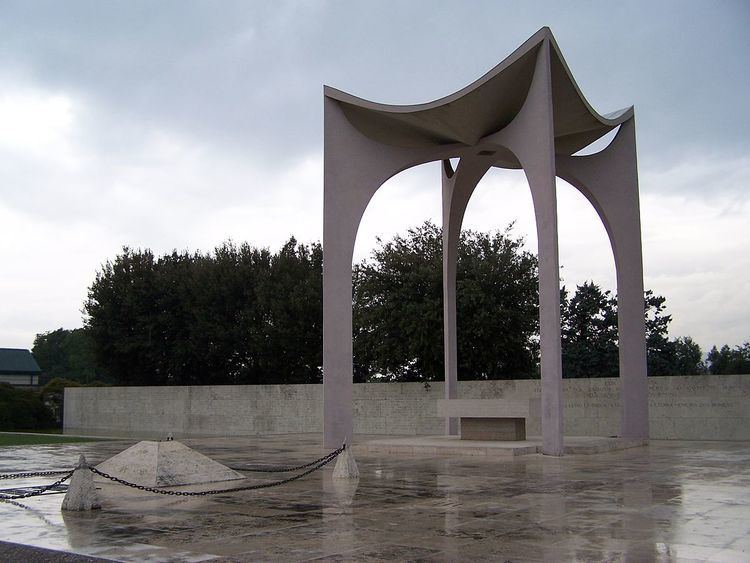Established 4 August 1945 Province Province of Pistoia Unknown burials 1 | Designed by Olavo Redig de Campos Total burials 463 Designer Olavo Redig de Campos | |
 | ||
Location near Pistoia, Tuscany, Italy Address Via delle Sei Arcole, 51100 Pistoia PT, Italy | ||
The Brazilian Military Cemetery of Pistoia is a former WW II memorial cemetery located in Pistoia, Toscana, Italy.
Contents
The cemetery site still honors the fallen Brazilian soldiers' sacrifices in Italy, now with the Brazilian Monument and Tomb of the Unknown Soldier of World War II.
WW II history
In 1944 Brazil participated in the Second World War with 25,000 soldiers of the Brazilian Expeditionary Force against the Axis in the Serchio Valley, in Versilia and in Garfagnana, on the Appennini.
In their final advance, the Brazilians reached Turin and on 2 May they joined up with French troops at the border in Susa.
The Brazilian Military Cemetery of Pistoia contained the remains of 463 Brazilian soldiers from World War II, most of whom lost their lives in the Spring offensive in Italy (Fornovo) in 1945. Until 1960 the soldiers remained buried in the cemetery near Pistoia.
In 1960, the cemetery was closed and their remains were officially interred in Brazil, with other Brazilian War II soldiers, at the new National Monument to the Dead of World War II (Monumento Nacional aos Mortos da Segunda Guerra Mundial). It is located on Guanabara Bay in Flamengo Park, in the Flamengo district of Rio de Janeiro.
Brazilian Monument and Tomb of the Unknown Soldier of World War II
After the remains were transferred, the body of a soldier was found remaining in the cemetery. The Brazilian Government chose to leave and honor it there, in a new votive Tomb of the Unknown Soldier.
In 1967 the cemetery reopened with the inauguration of a Modernist votive Brazilian Monument and Tomb of the Unknown Soldier of World War II. The monument's serene site plan: with stone terraces, the votive "Tomb of the Unknown Soldier" memorial, and a sculptural open pavilion; were designed by Brazilian modernist architect Olavo Redig de Campos (1906–1984), a contemporary of Oscar Niemeyer.
The Monument has been visited by two Presidents of Brazil.
